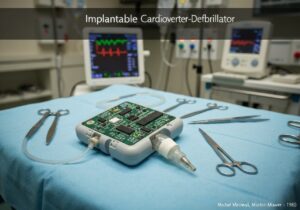A type of observational study that analyzes data from a population, or a representative subset, at a single point in time.
- Méthodologies : Ingénierie, Qualité
Étude transversale

Étude transversale
- soins de santé, Assurance qualité, Contrôle de qualité, Gestion de la qualité, Recherche et développement, Statistical Analysis, Tests statistiques
Objectif :
Comment il est utilisé :
- Researchers collect data from a group of subjects simultaneously to investigate the prevalence of a condition or the relationship between variables. For example, a survey of factory workers on a single day to check for back pain symptoms.
Avantages
- Relatively quick and inexpensive to conduct; can study multiple outcomes and exposures at once; provides a snapshot of the population at a specific time.
Inconvénients
- Cannot establish a cause-and-effect relationship; is prone to certain biases (e.g., recall bias); does not capture changes over time.
Catégories :
- Clients et marketing, Ergonomie, Qualité
Idéal pour :
- Quickly gathering data on the prevalence of a condition or attitude within a population at one specific time.
Cross-sectional studies are widely employed across numerous disciplines such as healthcare, psychology, and market research, providing a cost-effective approach to capturing a population’s status at a single point in time. In product design, for instance, companies can use this methodology to assess user satisfaction or the prevalence of specific user behaviors by surveying customers regarding their experiences with existing products. This can occur during the early phases of product development, where understanding consumer attitudes can inform design iterations. In the medical field, researchers might analyze the simultaneous health records of a specific demographic to explore correlations between lifestyle factors and chronic diseases, allowing public health officials to better allocate resources based on the data collected. Within the engineering sector, cross-sectional research can evaluate the safety perceptions among workers across various facilities, which could lead to immediate adjustments in policy or equipment. Effective execution of these studies typically involves participation from a diverse range of stakeholders, including researchers, product managers, and target population representatives, ensuring the data reflects various perspectives and conditions. The approach serves organizations well, particularly when the need arises to address health interventions or refine products based on real-time feedback, ultimately enhancing decision-making processes without the prolonged timelines that longitudinal studies often entail.
Principales étapes de cette méthodologie
- Define the research question and objectives.
- Select the target population for the study.
- Determine the sample size needed for statistical significance.
- Develop and validate measurement instruments, such as surveys or questionnaires.
- Establish inclusion and exclusion criteria for participants.
- Administer the survey or assessment at a specific point in time.
- Ensure data collection adheres to ethical guidelines and confidentiality standards.
Conseils de pro
- Incorporate stratified sampling to ensure diverse representation of subgroups, enhancing the validity of the findings regarding conditions across different segments.
- Utilize validated instruments and questionnaires to assess variables, ensuring the reliability of the data collected on conditions like back pain.
- Integrate advanced data analysis techniques, such as regression models, to control for potential confounding variables while exploring relationships between conditions and exposures.
Lire et comparer plusieurs méthodologies, nous recommandons le
> Référentiel méthodologique étendu <
ainsi que plus de 400 autres méthodologies.
Vos commentaires sur cette méthodologie ou des informations supplémentaires sont les bienvenus sur le site web de la Commission européenne. section des commentaires ci-dessous ↓ , ainsi que toute idée ou lien en rapport avec l'ingénierie.
Contexte historique
1960
1960
1969
1976-05-28
1980
1990
1960
1965
1970
1980
1980
(si la date est inconnue ou n'est pas pertinente, par exemple "mécanique des fluides", une estimation arrondie de son émergence notable est fournie)











Articles Similaires
Gestion des opérations de fabrication (MOM)
Système d'exécution de la fabrication (MES)
Plan de contrôle de la fabrication
Tests manuels
Tableaux d'évaluation des manutentions manuelles (MAC)
ManTRA (outil d'évaluation des risques liés aux tâches manuelles)